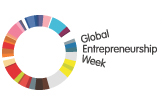SAN FRANCISCO — Even amid the contraction of the venture capital industry, which fertilizes the seeds of new technology start-ups, some firms are expanding.
On Monday, Greylock Partners, which has backed Facebook and LinkedIn, announced that it had put together a new $575 million fund, one of the biggest to be created in the last year. It has also hired a new partner, Reid Hoffman, the founder of LinkedIn and an active investor in early-stage start-ups.
The venture industry has been pummeled in the last year by dismal conditions that have made it difficult for start-ups to go public or be acquired by bigger companies. Many have predicted that the number of venture firms could shrink by as much as half.

 U.S. Secretary of State Hillary Clinton talks about the important role Global Entrepreneurship Week plays in fostering the ideas and innovation needed to expand human welfare.
U.S. Secretary of State Hillary Clinton talks about the important role Global Entrepreneurship Week plays in fostering the ideas and innovation needed to expand human welfare.